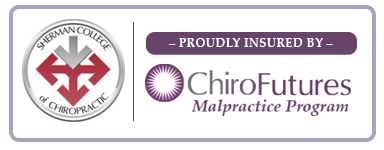Triage, Diagnosis & the Management of Vertebral Subluxation

I recently participated in a Facebook discussion where someone had posted a question about looking in the ears of children with an otoscope. The chiropractor was asking whether or not others did this and their opinions about it. The responses, claims, and questions were a microcosm of the entire profession.
Some of the responders said don't look.
Others said they would look but would not "diagnose".
Others said they would look, would not "diagnose" and then went on to name all the things they would look for i.e "diagnose".
Some feel it is our responsibility to look and others felt its not only a responsibility but that we were trained as primary care providers and have the knowledge and skills to look, make a diagnosis and treat based on that diagnosis.
As you can see, the responses and opinions were are all over the place.
Here is the REALITY.
You are damned if you do and damned if you don't - if you do not TRIAGE appropriately.
Triage is the key.
In terms of a malpractice accusation it will be a battle of the experts on what you should or should not have done and in a regulatory board action it will depend on the make-up of the board. As I posted on the thread: "Just pretend everyone on this thread is sitting on a board and this case came up - you can see how there would be disagreement. In that case majority rules."
And sad as it might be, the people who are sitting on your regulatory board may not be subluxation centered. They may in fact be very medically centered.
The chiropractic educational system asserts very strongly that we have been trained as primary care providers. This is different from being a portal of entry provider and its important to understand the distinction.
So what does that all mean day in and day out?
As I stated: It boils down to the concept of TRIAGE.
For example:
If a child comes in either with a chief complaint of ear problems or you suspect one after your history - you have the following options:
SCENARIO # 1:
Do the exam yourself, make a differential diagnosis, and make the appropriate referral. (Of course your state scope dictates whether you can do this or not so know your state law, rules and regulations).
You then need to make the decision to adjust them or not for any subluxations found before or after they follow-up on the referral. (That before or after is crucial - more on that in a minute.)
OR
SCENARIO # 2:
You can decide NOT to look in the ear, but make the appropriate referral, while deciding to adjust now or wait until the ears are checked out.
EITHER WAY you must TRIAGE the patient.
You must decide whether they belong in your office, someone else's office or both. You must decide if they belong in that other office right now or after you work your magic.
If your practice focus is the location, analysis and correction of subluxation and you do not wish to diagnose or treat anything else then you still have to TRIAGE the patient and make a decision about adjusting now or waiting.
I can tell you that there are state regulatory boards that do not buy into the notion that you can restrict your diagnosis to vertebral subluxation only and instead expect you to render a complete differential diagnosis(es) based on the patient's hsiotry and presentation.
If you beleive that your chiropractic education actually prepared you to practice primary care and you want to look in ears, make a diagnosis, own that diagnosis and treat based on that diagnosis then you still must TRIAGE the patient.
Bear in mind that when it comes to depositions and experts testifying against you at your trial, your OPPOSING experts in a case like this will be:
- A Board Certified Otolaryngologist
- A Board Certified Pediatrician
- A chiropractor who is most likely anti-subluxation
How do you think they are going to testify in either scenario?
For those wondering why the decision to adjust now or wait until they are checked out is crucial, consider a neonate brought in by the mother before going to the pediatrician. The child is fussy, not sleeping and pulling on the ear.
After your history and exam you decide to refer to the pediatrician (TRIAGE) BUT you decide to adjust first before they leave the office - TREATMENT.
It turns out when they get to the pediatrician things are worse then suspected and there is an infection that worsens . . .
You will be in much more hot water for having TREATED before they left as opposed to telling mother to return to you AFTER seeing the pediatrician.
Opposing experts will argue (regardless of the facts) that you were treating an INFECTION.
And if you are checking babies for ear issues, please make sure you are checking their TEMPERATURE since a fever in a newborn is taken very seriously by allopaths and referral is not optional in terms of standard of care.
Again - don't shoot the messenger. I am not saying anyone is "wrong" I'm just letting you know what actually happens.
As always I look forward to your feedback, questions and concerns.
Matthew McCoy DC, MPH
CEO & Co-Founder
ChiroFutures Malpractice Program
Blogs
- The Chiropractic Cartel: A Look Back at Bias in Accreditation and its Imact on Today's Profession
- Inside Montana's Chiropractic Monopoly: ACA & MCA's Brazen Board Takeover
- Concerns Grow About Control of the NY State Chiropractic Board by the ACA - Use of X-ray in NY Under Threat
- Reproductive Health Information and Chiropractic Care: Navigating New Privacy Regulations
- Navigating Substance Use Disorder (SUD) Consent: What Chiropractors Need to Know














